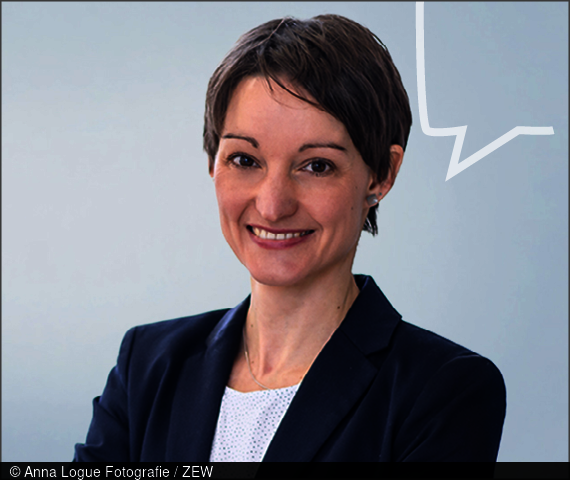This Is a Key Step Towards More Transparency and a Better Overview of Pensions
Questions & AnswersQ&A with ZEW Economist Prof. Dr. Bucher-Koenen
The German Federal Cabinet has adopted a draft law for the introduction of a digital pension platform. An information portal will be set up under the German Pension Authority (Deutsche Rentenversicherung Bund) in order to cover all three pillars of old-age provision, namely statutory, occupational, and private. The portal should be able to show how much money you have saved and what monthly pension payments you can expect at retirement. In this interview, ZEW economist Professor Tabea Bucher-Koenen talks about why a digital pension platform is so important.
What exactly is a digital pension platform?
A digital pension platform allows people to get an overview of their entire income from different old-age provision schemes. It would essentially give a quick and easy overview of the claims they have acquired in the statutory pension scheme or the various private and occupational pension schemes, for example, with all of them being added and presented together. Though providers already send out pension notifications by mail, I don’t think many people systematically check these letters and, for example, enter the figures in a neatly sorted Excel spreadsheet for an organised overview. The aim of the digital pension platform is to do just that – provide an encompassing overview – which is done by a neutral party that brings all the various claims together, presenting them clearly and neatly on one page.
What’s important for the pension platform in the long-term?
For now, this legislative proposal focuses on insurance-related products. But the next important step is making the overview general and flexible enough for people to transfer their pension information into apps from other providers, allowing them to further customise their pension planning. For example, you might want to include an asset portfolio, which wouldn’t be possible with the digital pension platform provided by the German Pension Authority. But as an end-user, I should be free to take my data from the digital pension platform offered by the government and embed it in a different context. I also think it’s essential that people who want to dive a little deeper are given the opportunity to set their own parameters. In other words, you need the opportunity to play around with the possibilities, see what happens if you take on another savings contract now and put aside an extra 50 euros a month, or if you retire one year before or after the statutory pension age.
You were involved in a study on the subject of pension overviews. What were your findings?
For the study, we programmed an app-based pension information system, a so-called “Pension Cockpit”, offering to create a pension overview for volunteers from the client pool of two separate banks. First, we invited the volunteers to complete a short questionnaire on the subject of old-age provision. We then asked them to register on the app and manually enter the information from their pension statements or send them to us directly. The first conclusion from this experiment was that the Pension Cockpit has to be automatic, since it’s simply too time-consuming to enter the numbers manually. The second finding was that an incredible number of people dropped out of the experiment. Merely providing us with the information we needed to create the Pension Cockpit was a huge hurdle in itself. I think that if you want to make it easier for people to plan their retirement, you have to keep the initial time and money investments as low as possible. The easier it is to start, the more likely people are to actually take look at it and really benefit from it.
Did the participants’ behaviour change during the study?
People found the information to be very helpful, and they felt better informed than before. We also found that especially people who previously had little financial knowledge tended to adjust their savings behaviour afterwards. We could also see in the following months that people who felt little informed at the beginning indicated, after participating in the study, that they had adjusted their pension provision behaviour by putting more money aside than before.
Will the digital pension platform help those who have low financial literacy?
This is what we hope for. To achieve this, we must arouse people’s interest and willingness to use this tool. I believe this area requires much further research. If you look at the link between financial literacy and private pension provision, you see people with lower financial literacy, on average, also plan their old-age provision less thoroughly. They rarely have private pension contracts and are less likely to pay into the occupational pension scheme on their own account. I think the essential point in planning a digital pension platform is not to develop a tool that targets those who already have an interest in this topic. Instead, we also need to consider how these concepts can be made accessible to people who have little affinity to financial topics. To this end, we have to think about what instruments to use to approach them so that they don’t feel overwhelmed by a flood of information and a certain complexity that naturally comes with the subject. I believe that this is a major challenge.
